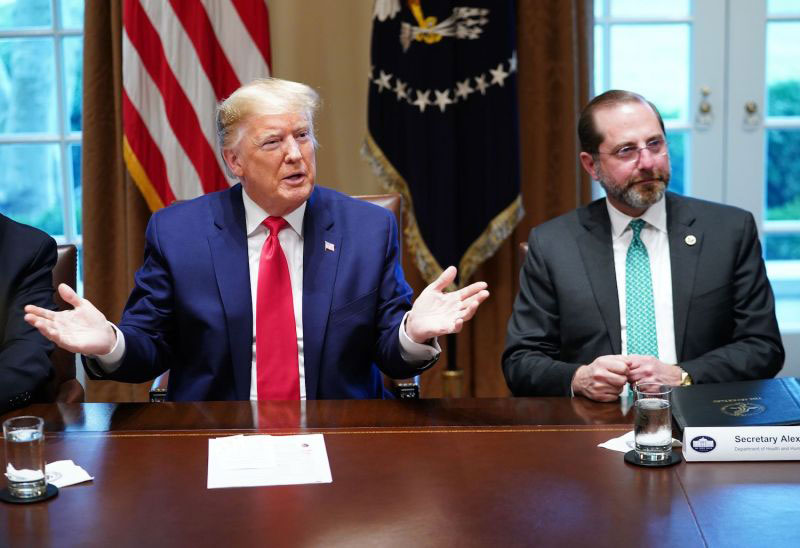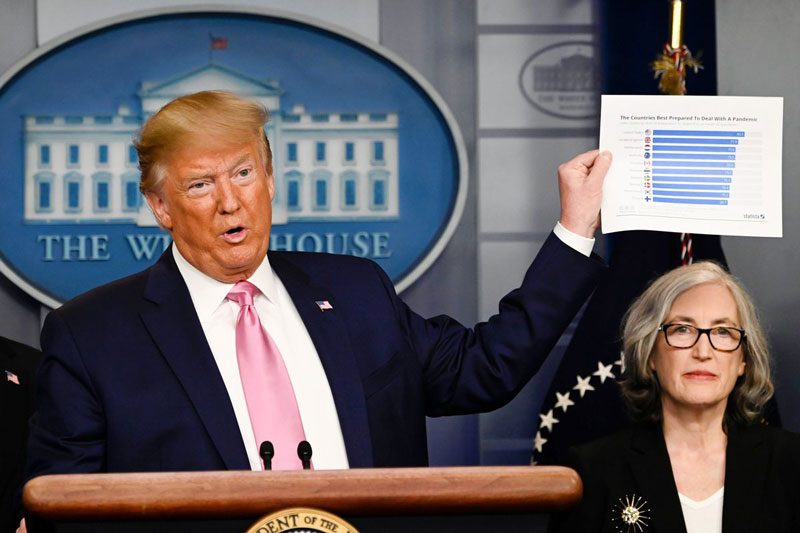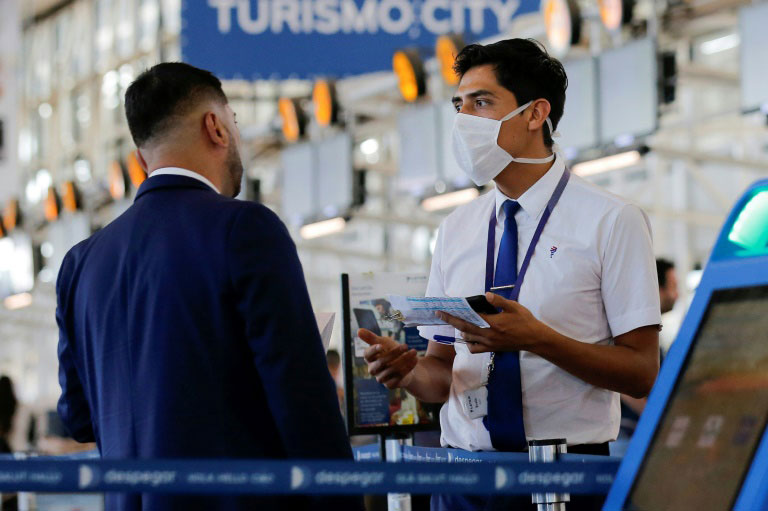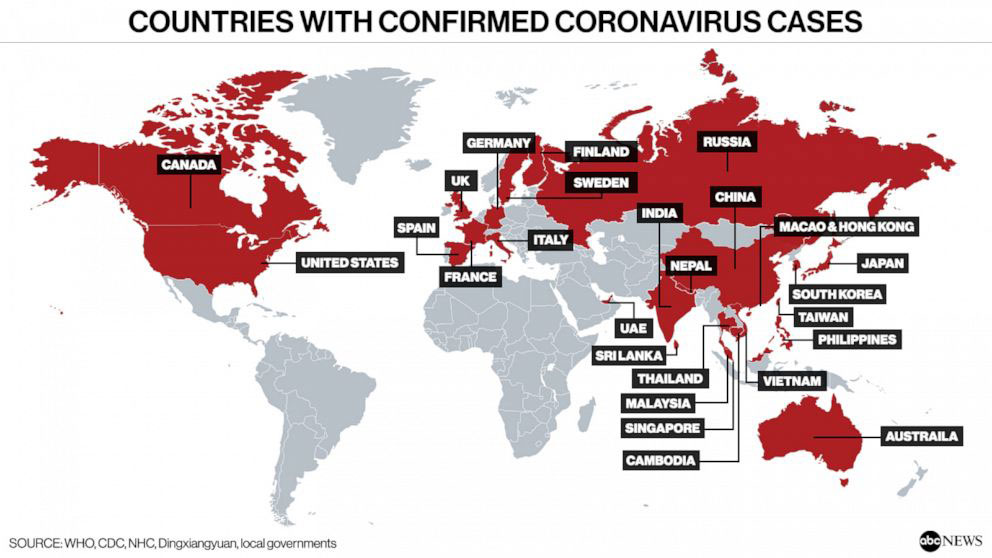Last week, the Centers for Disease Control and Prevention warned that the United States should brace for a domestic #coronavirus outbreak, with the director of its National Center for Immunization and Respiratory Diseases explaining that “it’s not so much of a question of if this will happen in this country any more, but a question of when this will happen.” Globally, the case count for this pneumonia-like disease has topped 85,000 across every continent except Antarctica, with over 3,000 deaths so far. The vast majority of these have occurred in mainland China, where the spread of the virus began, but on March 1, the U.S. reported its first novel #coronavirus-related death, in Washington State. More deaths have been reported since, with nine confirmed so far.
With approximately 100,000 CoronaVirus cases worldwide, and 3,280 deaths, the United States, because of quick action on closing our borders, has, as of now, only 129 cases (40 Americans brought in) and 11 deaths. We are working very hard to keep these numbers as low as possible!
— Donald J. Trump (@realDonaldTrump) March 5, 2020
As of March 4, there were at least 118 confirmed cases of the new coronavirus — the WHO has officially named the disease that this virus causes COVID-19 — across the U.S. Most of the initial cases were people recently traveled to China or were released from quarantine aboard the Diamond Princess cruise ship, which experienced an outbreak last month. Increasingly, though, new cases have cropped up in people who have no known association with outbreak epicenters, suggesting that the virus is spreading undetected through person-to-person contact and has been for weeks.

COVID-19 cases have been confirmed in 16 states, including Washington State, Oregon, California, Arizona, Utah, Nebraska, Texas, Illinois, Wisconsin, Massachusetts, Rhode Island, Georgia, and New York. In Washington State, where every coronavirus fatality in the U.S. so far has occurred, it’s possible that as many as 1,500 people may have been infected. There’s also an outbreak at a long-term care facility, the Life Care Center, in Kirkland, Washington, where 27 residents and 25 employees reportedly have COVID-19 symptoms.


President @realDonaldTrump and Vice President @Mike_Pence met with airline CEOs earlier to discuss the impact of the Coronavirus on air travel. pic.twitter.com/JEQP8E0tvO
— The White House (@WhiteHouse) March 4, 2020
On March 1, health officials announced Rhode Island’s first case, in a man who recently returned from Italy, while Oregon announced its first “presumptive case” less than a week later.
Two cases have been confirmed in New York as well. On March 1, New York governor Andrew Cuomo released a statement saying the patient, a woman in her late 30s, had recently traveled to Iran, where an outbreak is well underway. Two days later, a second case was confirmed; per the New York Times, the patient, a man in his 50s residing in Westchester County, had no direct link to a center of contagion, suggesting the virus is “spreading in communities with no known connection to hot spots for the disease.”
On March 2, a 56-year-old man who had traveled from Milan to Atlanta was identified as the first case of coronavirus in the state of Georgia. His son was identified as the state’s second case.
What are U.S. health officials doing about coronavirus?
Last week, President Donald Trump put Vice-President Mike Pence — a man with a frankly dismal track record in public health — in charge of the coronavirus response. assuring the public that the White House is “very, very ready for this” and “there’s a very good chance you’re not going to die” from COVID-19.


The Trump administration has barred all travel to Iran (there already was such a ban in place, but it’s been expanded to include foreign nationals who have visited Iran in the past two weeks), limited travel from China, and issued warnings against traveling to parts of Italy and South Korea. On Tuesday, Trump said he might expand limits on international travel in the hopes of containing the virus, telling reporters, “We’re looking at other countries and we’re being very stringent.”
There have already been some issues with the availability and accuracy of the coronavirus test within U.S. borders. Some people say they’ve been denied tests. Indeed, the criteria for getting tested were prohibitively narrow: Previous guidance stated it should be limited only to those who may have come into direct contact with the virus, whether by through a hot spot of contagion or an infected individual. On Tuesday evening, Pence announced in a press conference that the government is issuing new guidance that says anyone in the country can be tested for coronavirus, subject to doctors’ orders. Still, there’s widespread confusion, and government coronavirus hotlines have been reportedly inundated with calls.


The House is expected to vote Wednesday on a $7.5 billion emergency funding package, but it’s reportedly stalled over Republicans’ concerns about vaccine costs and hospital reimbursement procedures. According to Politico, “The biggest issue, according to several people familiar with negotiations, involves a Democratic attempt to control the costs of vaccines and other treatments that are developed in response to the outbreak.” Meanwhile, the World Health Organization has said it will take up to 18 months to develop a vaccine for COVID-19.
What should I do to minimize my coronavirus risk?
In most cases, COVID-19 is not fatal, but it appears to pose the greatest risk to elderly people; very, very young people; and people with preexisting conditions that compromise their immune systems. (Doctors and medical workers may also be at greater risk, due to their higher-than-average odds of exposure.) Because the CDC anticipates a sharp uptick in domestic transmission, though, it is urging people to prepare for the worst: Stock up on supplies — medicine, non-perishable foods, toilet paper, etc. — and fastidiously wash your hands.
Face masks have been selling out online and in stores, but the surgeon general has pleaded with people to stop buying them: Surgical masks don’t do much to keep out disease-spreading particles, and the masks that do seem to help — N95 facial respirators — are recommended only for people who are already infected, or for health-care workers and caregivers. People wearing masks as a preventive measure may be taking valuable and limited resources away from those who actually need them. If you do find yourself in need of an N95 respirator, and you have creative facial hair, the CDC also has thoughts on which mustache styles will be safest in a pandemic.
If you have symptoms associated with coronavirus — coughing, fever, respiratory issues — call your doctor before simply showing up at their office: The virus is highly contagious and you want to limit the possibility of spreading it, bearing in mind that right now, the odds are better that you simply have a cold or the flu. (Which is also serious, and many health experts would advise you to get a flu shot.) Still, if you are sick, the CDC recommends that you stay home and self-isolate, confining yourself to one room as much as possible and wearing a face mask when you have to interact with others. Wash your hands frequently — soap and water and at least 20 seconds of scrubbing — and avoid touching shared household items, cleaning “high-touch” surfaces regularly. Your health-care provider and even local health department will help you determine how long it’s appropriate for you to keep up these precautions.
Regardless of whether or not you have symptoms, though, keep your hands clean and seriously, stop touching your face.
News Courtesy: thecut.com














